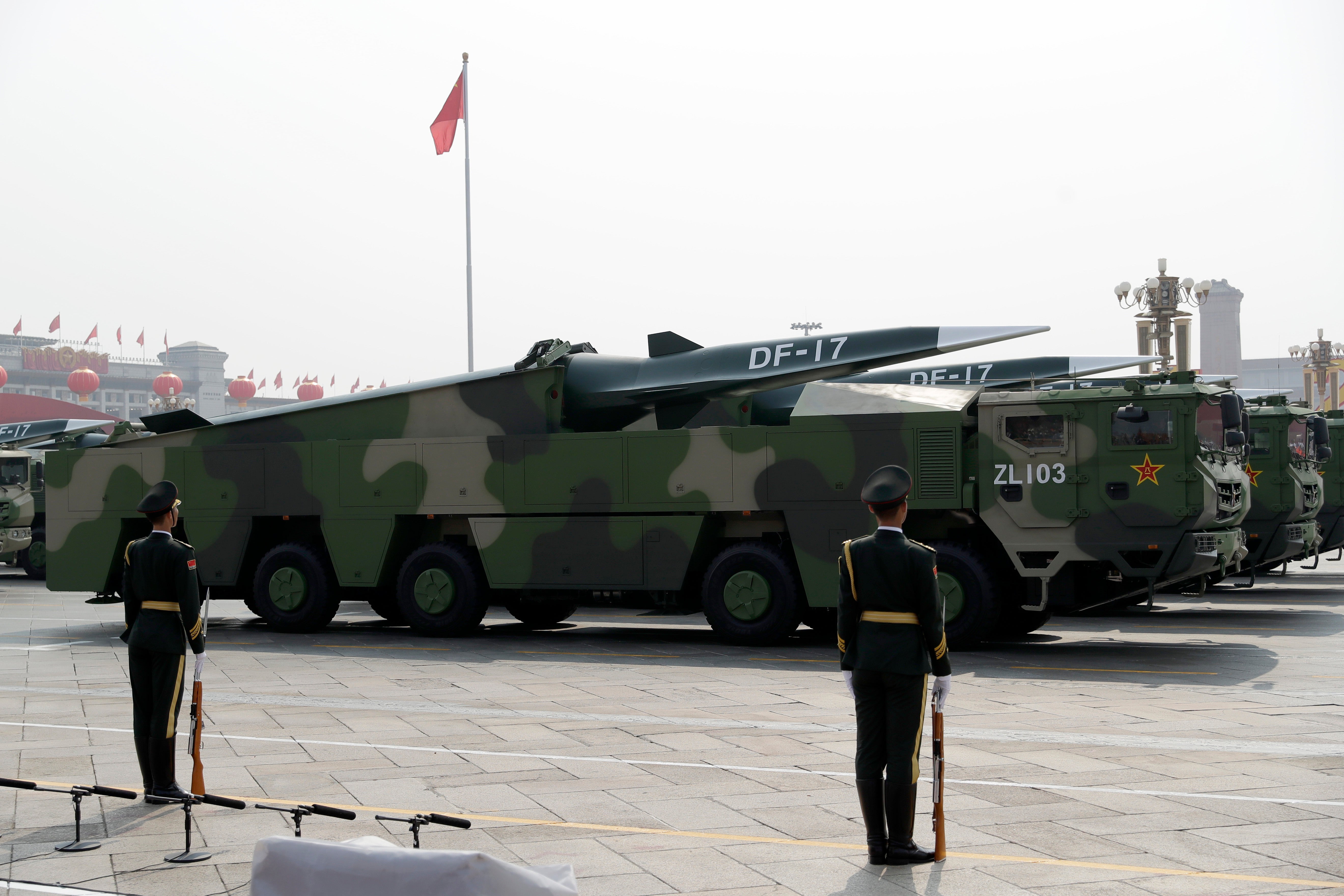China says conducted mid-course missile interception test
China says it carried out a successful ground-based mid-course missile interception test

Your support helps us to tell the story
From reproductive rights to climate change to Big Tech, The Independent is on the ground when the story is developing. Whether it's investigating the financials of Elon Musk's pro-Trump PAC or producing our latest documentary, 'The A Word', which shines a light on the American women fighting for reproductive rights, we know how important it is to parse out the facts from the messaging.
At such a critical moment in US history, we need reporters on the ground. Your donation allows us to keep sending journalists to speak to both sides of the story.
The Independent is trusted by Americans across the entire political spectrum. And unlike many other quality news outlets, we choose not to lock Americans out of our reporting and analysis with paywalls. We believe quality journalism should be available to everyone, paid for by those who can afford it.
Your support makes all the difference.China says it carried out a successful ground-based mid-course missile interception test in an apparent sign of progress in its ability to bring down weapons incoming from space.
The Defense Ministry says the operation was carried out late Friday night within Chinese territory and achieved “the desired test objective.”
The test was “defensive in nature and not targeted against any country,” the ministry said, giving no other details such as whether it actually struck an object, how many interceptors were fired and where they landed.
Such systems, which consist of ground-based interceptor missiles and a huge array of radars and fire control systems, aim to bring down ballistic missiles, including ICBMs carrying nuclear or other warheads, while they are flying in space midcourse on the way to their targets.
Referred to by the U.S. as ground-based mid-course defense, or GMD, such systems are hugely complex and expensive to build, test and maintain, and China’s capabilities in the field are not well known.
Previously, the Defense Ministry issued a near-identical statement announcing it had conducted just such a test on Feb. 4, 2021, which it said had also met its goals. Another Chinese test reportedly took place in 2018.
Such “kinetic-kill" interceptors can also be used as anti-satellite weapons, and China sparked considerable criticism when it used such a missile to destroy a defunct Chinese weather observation satellite in early 2007. China did not announce the operation and the explosion left a massive debris field that continues to imperil objects in orbit, including China's own space station, Tiangong.
China's military-run space program and missile development efforts are intimately linked and it is believed to have used satellite launch centers to conduct missile tests.
China already has one of the world's largest arsenals of all types of missiles and is believed to be expanding it rapidly. A Pentagon report released last year said China currently has about 400 nuclear warheads and that number could grow to 1,500 by 2035.
GMD forms a major component of missile defense for the U.S. military, which has put it through additional testing in response to North Korea’s increasing number of missile tests.
The U.S. has 44 interceptors deployed at Fort Greely, Alaska and Vandenberg Air Force Base, California intended to cover the entire American homeland, according to the U.S. Department of Defense's Missile Defense Agency.
That's enough to counter a rogue attack from a country such as North Korea, which is developing missiles that could strike the continental United States, but would be easily overwhelmed by a large-scale attack from Russia or China.
North Korea said Friday it flight-tested a solid-fuel intercontinental ballistic missile for the first time, a possible breakthrough in its efforts to acquire a more powerful, harder-to-detect weapon targeting the continental United States.
U.S. tests have shown such systems are far from infallible and that roughly three interceptors must be fired to bring down one incoming missile.
The U.S. also operates the Patriot and THAAD anti-missile systems that cover a smaller geographic area.